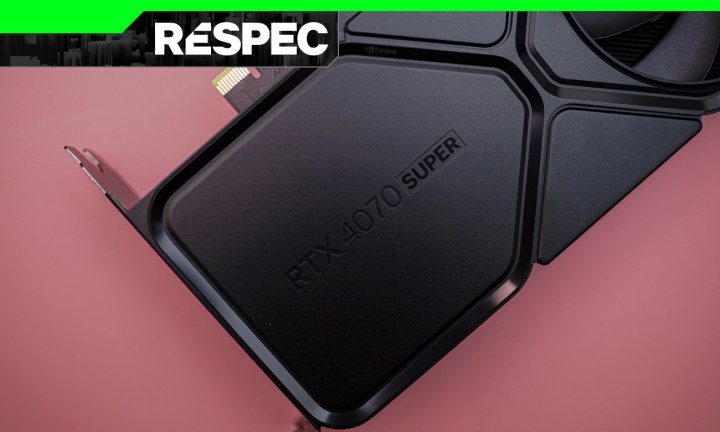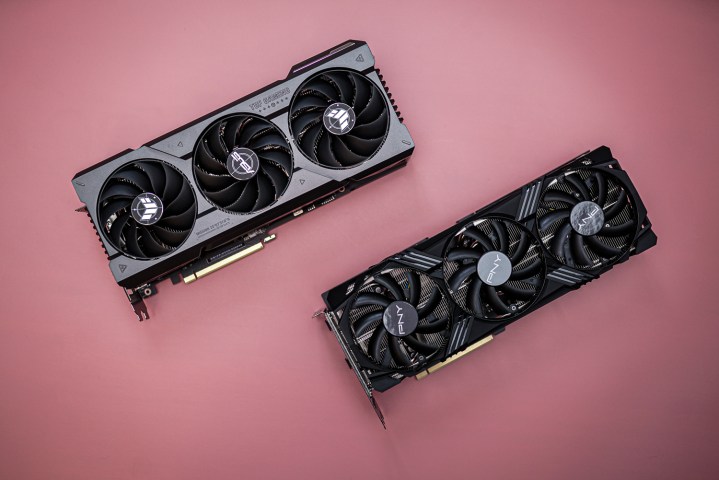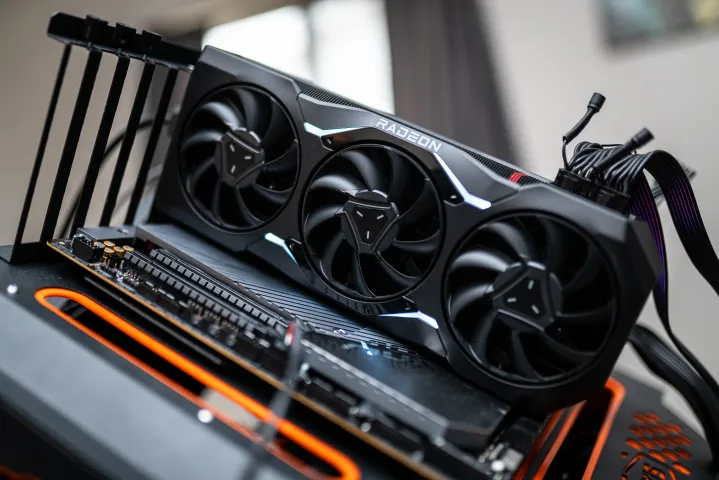
There’s no better way to reverse bad press than a genuine apology tour. GPUs are on a bit of one right now in an attempt to win back the goodwill of PC gamers with juiced-up specs, better pricing, and some fancy new branding.
Most obviously, we can see this with Nvidia’s RTX 40-series Super GPUs, but AMD is also throwing its hat in the ring with the RX 7600 XT, too. Nvidia and AMD are responding to the rather disappointing year that GPUs just had, and in the process, they’re proving that enough discontent can bring the GPU market to a better spot.
The apology tour

We have four new GPUs to kick off 2024 — AMD has the RX 7600 XT, while Nvidia has the RTX 4070 Super, RTX 4070 Ti Super, and RTX 4080 Super. Each one of them is a clear attempt to right the wrongs of the base versions of these cards. It’s the common thread, and it’s something that at least Nvidia has engaged with in the past. The infamous RTX 20-series GPUs saw a Super refresh less than a year after releasing.
The RX 7600 XT gives AMD’s entry-level offering more VRAM and a boosted clock speed, while the RTX 4070 Super offers boosted specs to more closely align performance with price. The biggest changes come with the RTX 4070 Ti Super and RTX 4080 Super, however.
The base RTX 4070 Ti is one of the weakest GPUs Nvidia has released this generation. The Super model does a handful of things to bring it up to par. Most notably, it gets the full treatment of the AD103 GPU we see in the RTX 4080, as well as a higher core count and the 16GB of GDDR6X memory we see on the RTX 4080. The memory and core count were two of the biggest complaints about the RTX 4070 Ti when it launched with a $800 price tag.
The RTX 4080 Super is in a different position. We don’t have reviews yet, but based on the specs and Nvidia’s own performance claims, I suspect it will be almost identical to the base RTX 4080 in performance. The big change here is that Nvidia slashed the price from $1,200 to $1,000. And sure enough, that was the biggest complaint about the base RTX 4080 — it was never that it was a bad GPU, just too expensive.

So what? We see updated GPUs all the time. It would be more strange to not see a mid-gen refresh of graphics cards from AMD and Nvidia. The big difference this time around is the fanfare. Mid-gen refreshes are typically released under wraps. We get cards like the RTX 3080 12GB and RX 6950 XT. They’re announced and released during off months in an attempt for AMD and Nvidia to squeeze a little more life out of their silicon before the next generation drops.
That’s far from what we saw this time around. Nvidia and AMD both took to one of the largest events they’ll participate in this year, CES, to announce the new GPUs, and Nvidia went as far as to release new Founder’s Edition models fit with a new color scheme and branding. These aren’t just mid-gen refreshes where board partners can slap their old coolers on updated silicon — they’re a statement.
And that statement is an apology. Of course, multibillion dollar corporations don’t apologize with products, but the recent batch of GPUs are an attempt to win over some of the goodwill that was lost over the past year. The RTX 4070 Ti was universally panned, the RTX 4080 was way too expensive for what it offered, and although the RX 7600 was a decent if unimpressive GPU, it only ended up that way due to a last-minute price cut days before launch.
Damage control

It’s really the marketing that is different this time around. Like with most mid-gen refreshes, I suspect Nvidia and AMD aren’t expecting to sell a lot of new GPUs.
We’re seeing some of that in action already with the RX 7600 XT, RTX 4070 Super, and RTX 4070 Ti Super, which, according to some admittedly dubious sales data, aren’t selling as well as their base versions. Some YouTube hardware leakers went as far as to say sales for the RTX 4070 Super were a “disaster.” I see similar claims for most GPU launches, but it makes sense that these updated versions wouldn’t sell as well as the base models.
That doesn’t seem like the goal here. The goal seems to be to rewrite the narrative of the past year in PC gaming. The two common threads throughout last year were that GPUs didn’t come with enough VRAM and that GPU prices were too high. Almost every graphics card that released last year was criticized for its VRAM capacity or pricing, and usually both, from the RTX 4060 to the RX 7700 XT to flagships like the RX 7900 XT. The only exception I can think of is AMD’s RX 7800 XT.
It’s in the zeitgeist for PC gamers, and it’s no wonder. It’s hard to forget when Nvidia CEO Jensen Huang said that falling GPU prices were a “story of the past,” or when games like The Last of Us Part One and Hogwarts Legacy released in dire states, only to double down on performance issues with VRAM limitations. I wrote about how last year was one of the worst times to be a PC gamer, and that was due in no small part to GPU releases.
The vote

It’s great recognizing that Nvidia and AMD are trying to make up for some lackluster releases last year, but what can we take away from it? Well, something worked. It’s impossible to say if the GPUs sold poorly, or if Nvidia and AMD took feedback from users to heart, or if it was something else entirely. It doesn’t really matter, though. Clearly, AMD and Nvidia felt it was necessary to correct the issues we saw with GPUs last year.
There’s an important reminder here about the dynamic between companies selling products and the customers that buy them. Too far in one direction, and the company isn’t making as much money as it could. Too far in the other, and there’s bad will among the base of customers, which can lead to a decline in sales.
Regardless, it takes two to steer the ship. There’s the old adage about voting with your wallet, but it goes beyond that. Enough pushback on decisions that a large group of people don’t agree with can drive different decisions in the future, and we’re seeing a bit of that play out right now — however minor it may be.
Ultimately, we can only evaluate the products we have at any given time. Right now, Nvidia and AMD are trying to win back some favor, and doing a decent — if imperfect — job of it. We’ll have to see how long that drive holds.





